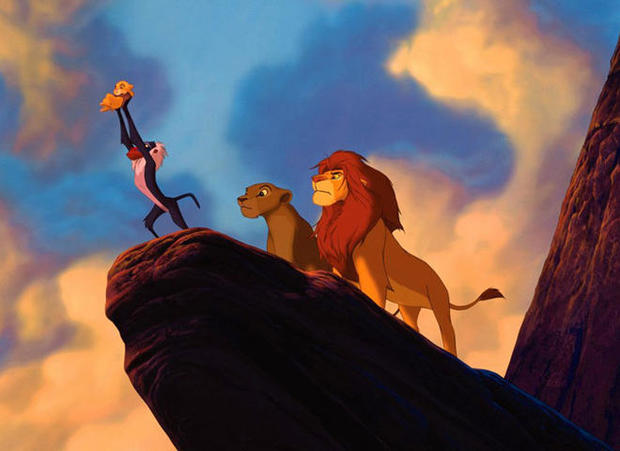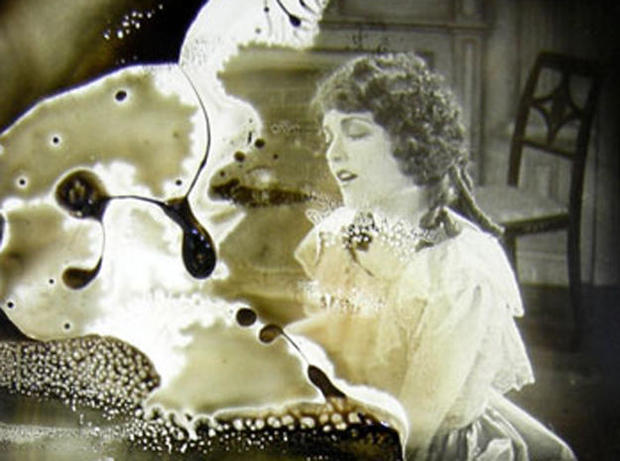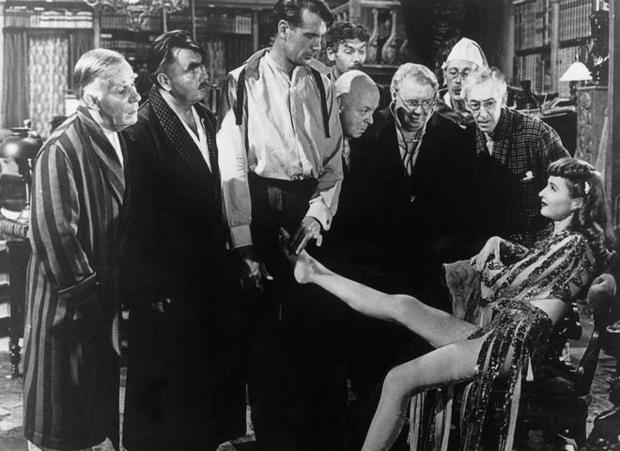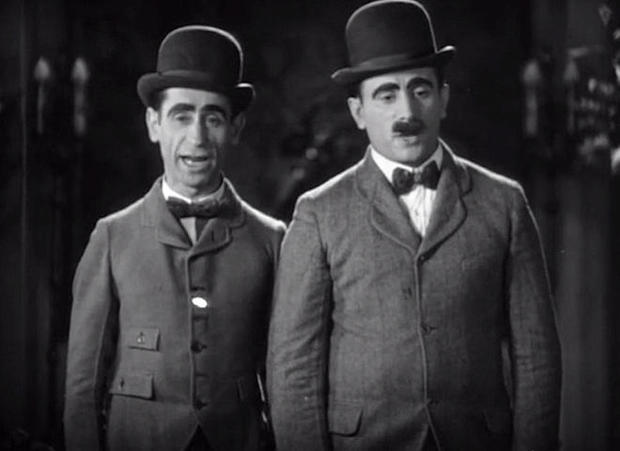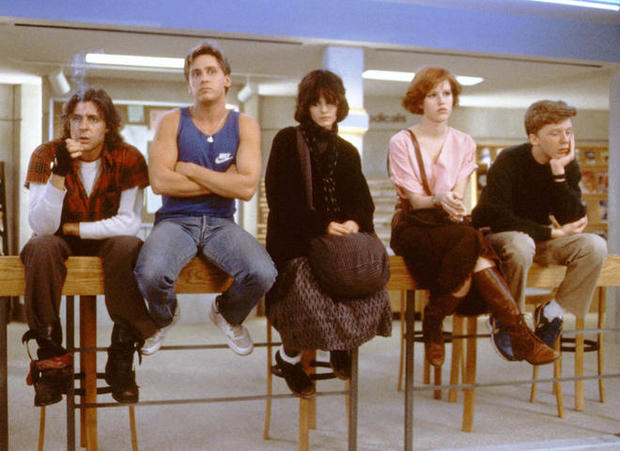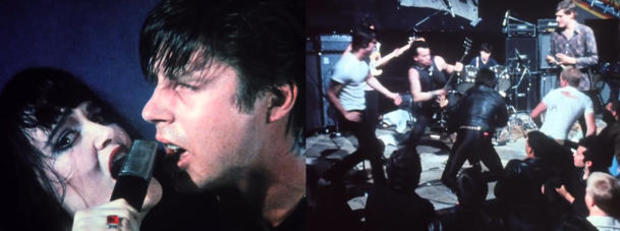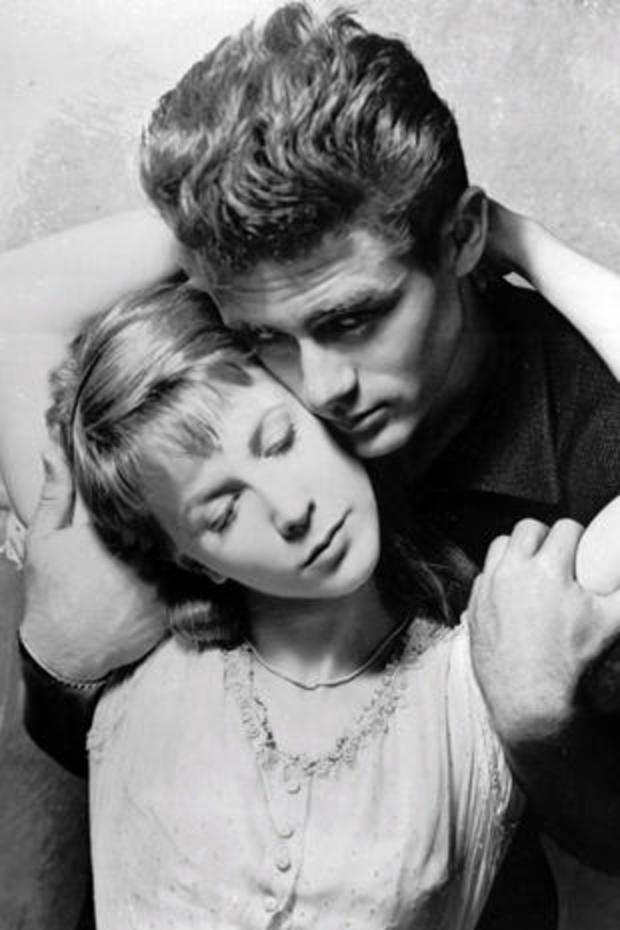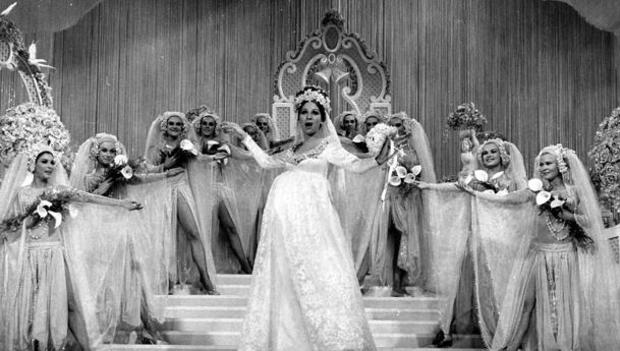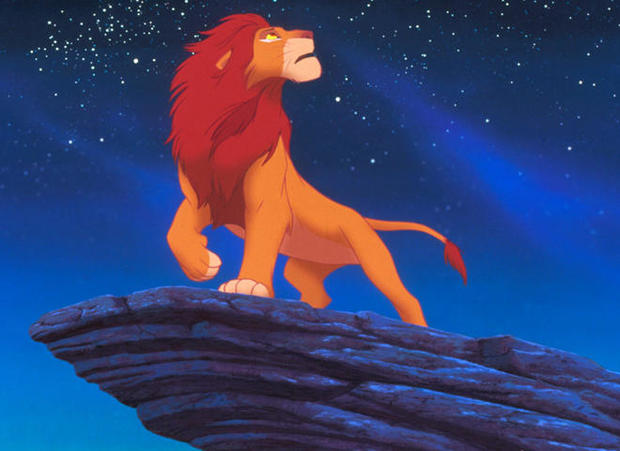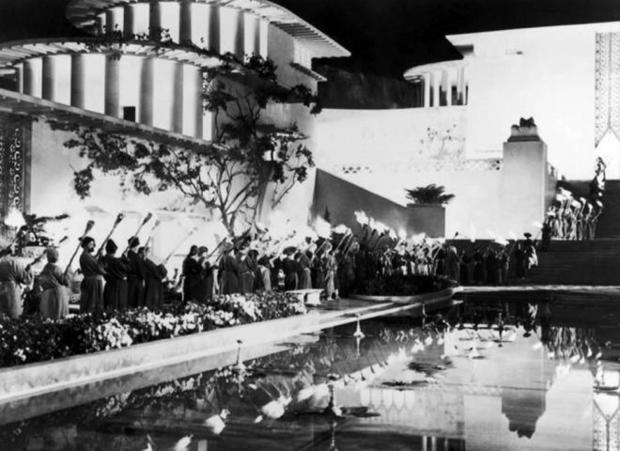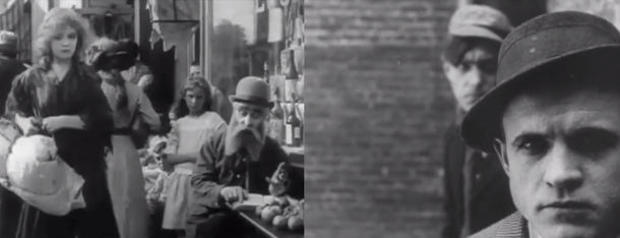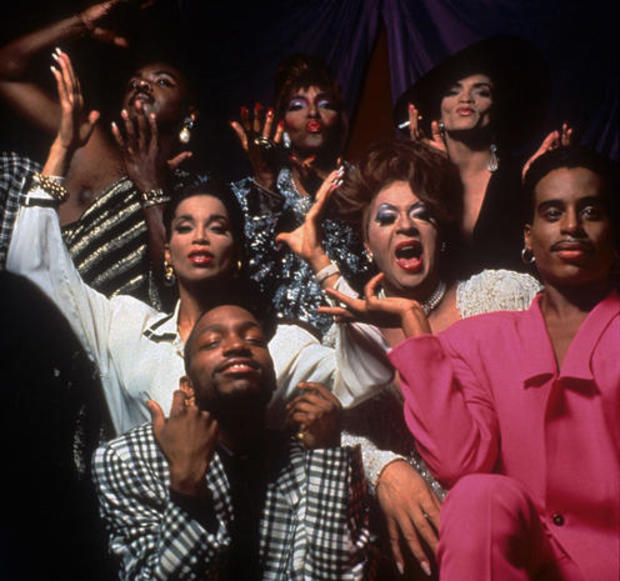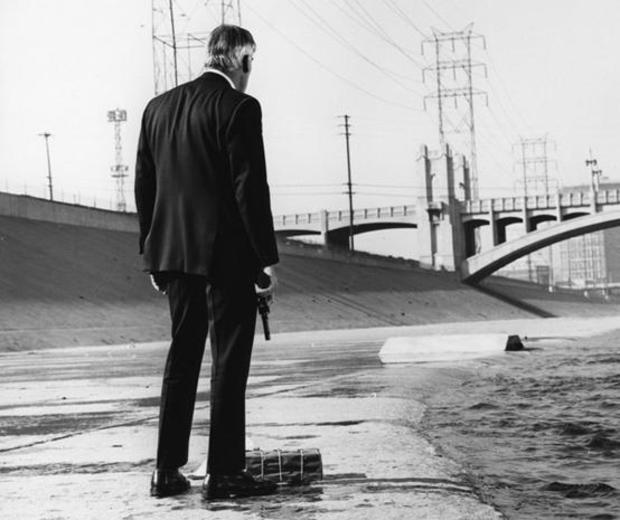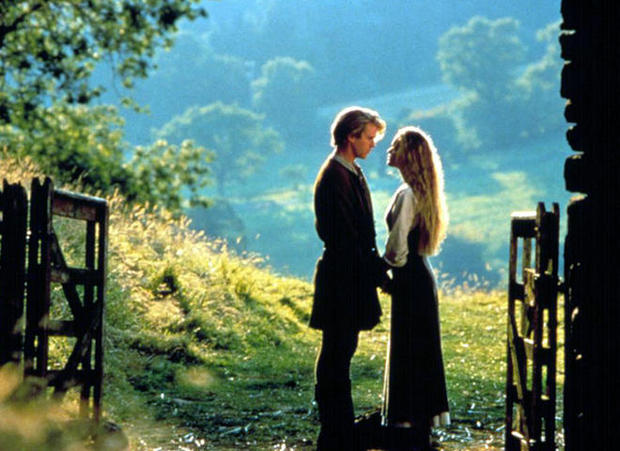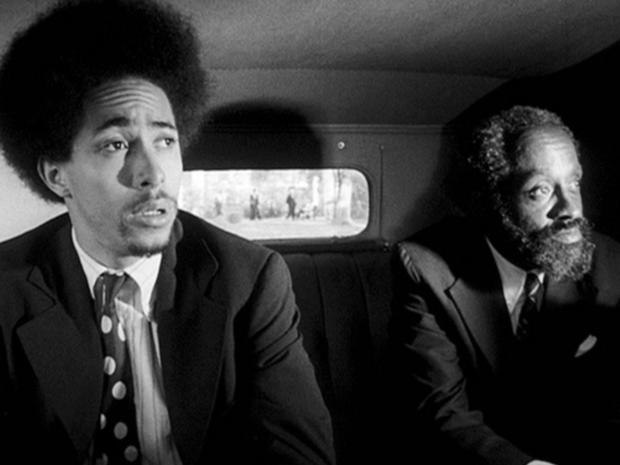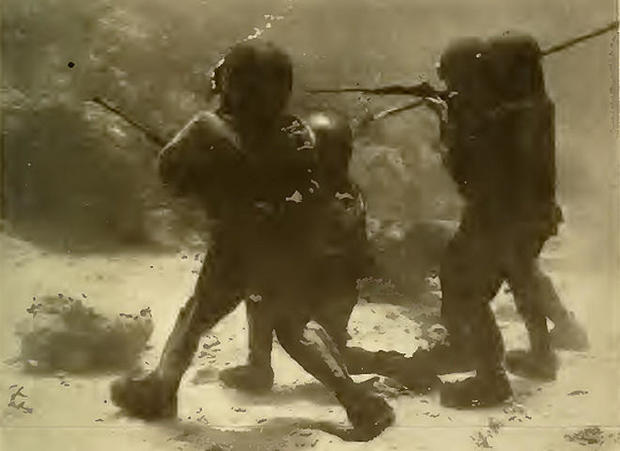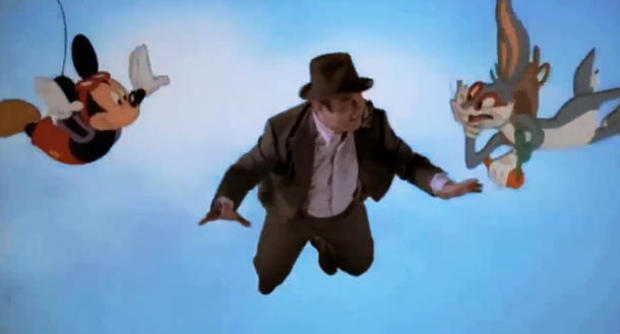2016 additions to the National Film Registry
On Dec. 14, 2016, the Library of Congress announced the latest additions to the National Film Registry, its compendium of motion pictures that have been judged to be culturally, aesthetically or historically important and worthy of preservation for future generations. In addition to Hollywood studio classics and box office hits, the Registry also protects independent films, documentaries, experimental works, cartoons, music videos, educational and training films, ads, and even home movies, in what is the most democratic, and American, of all film lists.
Among the 25 films added this year: Disney’s animated classic, “The Lion King.”
By CBSNews.com senior producer David Morgan
Decaying Nitrate Film
Left: Nitrate decay in the 1923 Clara Bow film “Maytime,” which was recently restored.
In addition to spotlighting cinematic achievements of the past, the National Film Registry helps protect our nation’s film heritage, by mandating preservation copies of each Registry title be stored at the Library. This is imperative, given the fragility of motion picture film. About 70 percent of films from the early years of cinema are lost - damaged, deteriorated, destroyed by fire, or uncared for by the studios that created them.
This year’s additions bring the Registry’s total to 700.
Click through our gallery to see the latest Registry films:
"The Atomic Cafe"
In the post-WWII era, when the Soviet Union’s arms buildup was a shadow stretching across America, government-produced educational and training films, newsreels and advertisements instructed the public on how to live in the atomic age. Take “Duck and Cover,” a cartoon in which Bert the Turtle teaches children how to respond to the flash of a nuclear blast, by ducking under their school desks. Atta boy, kids! Nuclear holocausts were never so darkly funny as in “The Atomic Cafe” (1982), a compilation of hilariously scrunchy archival footage produced and directed by Kevin Rafferty, Jayne Loader and Pierce Rafferty. Its sardonic humor was clearly an inspiration for later documentary filmmakers like Michael Moore (“Bowling for Columbine”), Ross McElwee (“Sherman’s March”) and Morgan Spurlock (“Super Size Me”).
"Ball of Fire"
Sugarpuss O’Shea: “For instance, do you know what this means, ‘I’ll get you on the Ameche’?”
Professor Potts: “No.”
Sugarpuss: ‘”’Course you don’t. An Ameche is the telephone, on account of he invented it.”
Howard Hawks’ delightful 1941 screwball comedy features a nightclub performer and gangster’s moll (the stunning Barbara Stanwyck) who catches the eye and ear (and lips) of a young grammar professor (Gary Cooper) compiling a dictionary of contemporary urban patois. In the words of Sugarpuss O’Shea, “Yum yum.”
"The Beau Brummels"
The movies killed vaudeville, but two performers who refused to go down without a fight were Al Shaw and Sam Lee. The popular duo made several appearances before film cameras, and in 1928 they made this eight-minute short, using early Vitaphone sound technology, which captured their corny musical routine and physical comedy. “The Beau Brummels” is one of many Vitaphone shorts that have been preserved by the UCLA Film and Television Archive.
For more info:
"The Birds"
Alfred Hitchcock’s film version of Daphne du Maurier’s tale of birds mysteriously striking back at mankind pitted the inexplicable (what could possibly be causing this avian terror?) with a sense of helpnessness and doom. Following his classics “Vertigo,” “North by Northwest” and “Psycho,” “The Birds” (1963) was open-ended in its mystery, putting the audience in the shoes of stars Tippi Hedren, Rod Taylor, Jessica Tandy and Suzanne Pleshette as they swat away flying terrors. The chilling electronic soundtrack of bird calls was created by composer Bernard Herrmann and Sala and Remi Gassmann. When shown on NBC in 1968, it was the highest-rated film ever on television up to that point.
"Blackboard Jungle"
The power and rebellion of rock ‘n’ roll, as signified by Bill Haley and the Comets’ “Rock Around the Clock,” was an inspiration for “Blackboard Jungle” (1955), about juvenile delinquency in inner-city schools. Directed by Richard Brooks, the film starred Glenn Ford as a teacher who faces off against tough guy Vic Morrow and, in a standout performance, Sidney Poitier as another rebellious young student.
"The Breakfast Club"
Among writer-director John Hughes’ numerous films about the trials and tribulations of teenagers (including “Pretty in Pink” and “Sixteen Candles”), “The Breakfast Club” (1985) is perhaps his most haunting. Starring Emilio Estevez, Anthony Michael Hall, Judd Nelson, Molly Ringwald and Ally Sheedy, the film hangs out with five high school students forced to spend their Saturday in detention, during which they overcome the clique-ish stereotypes that have defined the worlds of the Princess, the Athlete, the Brain, the Criminal and the Basket Case. As they talk of their tense or abusive relationships with their parents, and experience the domineering assistant principal Dick Vernon (Paul Gleason) overseeing detention, the five souls buffeted by teenage angst bond in ways unthinkable during class hours.
"The Decline of Western Civilization"
The punk scene in L.A. circa 1980 was not for the faint of heart, as witnessed in director Penelope Spheeris’ 1981 film - a documentary so potent that Los Angeles Police Chief Daryl Gates asked that the movie be banned. The film featured bands such as Black Flag, Fear, Alice Bag Band, Catholic Discipline, The Germs and Circle Jerks and X; their fans; and the hapless club owners whose venues become scenes of violence. Spheeris would go on to direct documentaries on heavy metal and gutter punk.
"East of Eden"
James Dean’s first big screen role - that of a troubled youth trying to win the love of a distant father, while also bearing the shame of learning his mother, long believed dead, is alive and running a brothel - immediately launched him into the stratosphere of movie stardom. But Dean’s brooding air, which attracts the girlfriend (Julie Harris) of his brother, was fueled both by his own eagerness to please his disapproving father (which director Elia Kazan witnessed during a family visit), and by the real-life tension between Dean and Raymond Massey, who played his father. Dean’s performance in “East of Eden” (1955) marked the first of two Academy Award nominations he would receive - both posthumously.
"Funny Girl"
“I am the beautiful reflection, of my love’s affection,
A walking illustration of his … adoration”
Fanny Brice’s tongue-in-cheek take on a Ziegfeld Follies extravaganza was one of the highlights of the film version of the Jule Styne-Bob Merrill musical, which starred Barbra Streisand when it opened on Broadway in 1964. Streisand had earned her second Tony nomination for her performance as Brice, who rose from the chorus to become the toast of the Great White Way. Reprising her role in the 1968 film, directed by veteran William Wyler, Streisand was a revelation (and an Oscar-winner) in her first motion picture, with showstopper moments like “I’m the Greatest Star,” “Don’t Rain on My Parade” (climaxing on board a tugboat in New York harbor), and her signature song, “People.” She also created an international incident when,, during filming, she was photographed kissing Egyptian costar Omar Sharif (playing gambler Nicky Arnstein) at the height of the 1967 Arab-Israeli War.
"Life of an American Fireman"
Edwin S. Porter’s 1903 short was only six minutes long, but “Life of an American Fireman” set the template for modern cinema, with its dramatic narrative of firemen racing to the scene of disaster. (In truth, a British film from two years earlier, “Fire!,” was notably similar, but lacking Porter’s innovative use of closeups.) The Edison Manufacturing Company film, shot in East Orange, N.J., presaged Porter’s revolutionary editing of “The Great Train Robbery,” released later the same year.
"The Lion King"
Lyrical animation and a timeless tale that evokes “Hamlet” in its story of a young lion cub claiming his rightful place following the death of his father made “The Lion King” (1994) one of Disney’s most beloved films. Its top-notch voice cast includes Jonathan Taylor Thomas and Matthew Broderick as Simba, Whoopi Goldberg, Robert Guillaume, James Earl Jones, Moira Kelly, Nathan Lane, and Jeremy Irons as the villainous Scar (“Oh, goody”). The film won two Academy Awards for its music (for the song, “Can You Feel the Love Tonight” by Sir Elton John and Tim Rice, and for Hans Zimmer’s original score), and inspired a long-running Broadway musical.
"Lost Horizon"
In Frank Capra’s 1937 fantasy based on James Hilton’s novel, Ronald Colman in on board a plane that crashes in the Himalayas, where he discovers a long-lost utopia, Shangri-La. “Lost Horizon” was nominated for seven Oscars, including Best Picture, and won two (for art direction and film editing). But the big-budget film flopped, and Columbia cut more than 20 minutes from its 132-minute running time, which altered the narrative and characterizations considerably. In the 1980s Robert Gitt (then at the American Film Institute) restored the film, using audio and still photographs to replace seven minutes of footage long lost. In 2014 an all-digital 4K restoration was created (incorporating an additional minute of footage not seen in decades) by Sony Pictures with the help of the UCLA Film and Television Archive, the British Film Institute, the AFI and the Library of Congress. Welcome back to Shangri-La!
"The Musketeers of Pig Alley"
Director D.W. Griffith’s 1912 drama of criminal gangs was revolutionary for its innovative staging and camerawork employing shifting focus. It’s also considered by many the first gangster film. Cast members included Dorothy Gish, Lillian Gish, Harry Carey and, in an uncredited role, Lionel Barrymore. Preserved by the Museum of Modern Art Department of Film.
"Paris Is Burning"
Director Jennie Livingston’s debut film, a documentary about the drag ball scene and gay and transgender communities of color in New York City, and how those subcultures responded to the scourges of homophobia, racism and AIDS, became a media sensation upon its release in 1991. Its exclusion from the Oscars helped lead to changes in how the Academy’s Documentary Branch nominates films.
"Point Blank"
Based on a crime novel by pulp writer Donald E. Westlake, “Point Blank” (1967) stars Lee Marvin as a gangster - double-crossed by a business partner and two-timed by his wife - who is out for revenge. The cult film noir for a counter-culture age, shot in San Francisco and Los Angeles with flashy Panavision cinematography, was directed (with swagger to spare) by John Boorman.
"The Princess Bride"
William Goldman adapted his 1973 novel, a parody of fairy tales, for the screen, creating a film that in itself was a parody of romantic fairy tale movies. Directed by Rob Reiner, “The Princess Bride” (1987) stars Cary Elwes and Robin Wright as the storybook lovers, Billy Crystal and Carol Kane as magical spell-makers, Mandy Patinkin as a swashbuckler seeking revenge, and Andre the Giant as, well, a giant. Framing the narrative are scenes of a grandfather (Peter Falk) trying to read the “Princess Bride” story to his grandson (Fred Savage), who keeps asking to skip past the kissing parts.
"Putney Swope"
When writer-director Robert Downey Sr.’s surreal satire, in which a Madison Avenue advertising agency is taken over by black nationals, was first released in 1969, reviewers both hailed and howled at its narrative and technical audacity. Remaking the ad firm as “Truth and Soul, Inc.,” Putney Swope (Arnold Johnson, right, with Buddy Butler) manages to make a successful business that speaks truth to power, thus invoking the ire of the U.S. government. As comedian Louis CK told Marc Maron, seeing the film in 1990 - retrieved from a dollar bin at a video store - was a life-altering event, which inspired him to pursue creative impulses “even if your ideas are really crazy, as long as you believe in them … Days later, I started pulling together little bits of money to make a movie. I started making movies, started making short films and just doing it. This movie was a direct reason why I believed it was worth doing stuff that maybe didn’t seem so easy to sell or to talk somebody else into.”
"Rushmore"
Director Wes Anderson’s charmingly crafted films have gotten more intricate and delightfully outrageous over time. But his second feature, the wry comedy “Rushmore” (1998), is his most winning. Jason Schwartzman stars as a misfit private school student whose ambition to succeed in all endeavors extends to competing against a businessman (Bill Murray) to win the heart of an elementary school teacher (Olivia Williams). It’s a joyous and inventive celebration of nerdish self-absorption, such as when Schwartzman’s Max Fischer stages a pyrotechnic-filled school play about the Vietnam War, for which audience members don safety glasses and earplugs.
Solomon Sir Jones Home Movies
Baptist minister and businessman Solomon Sir Jones (1869-1936) was also an amateur cameraman, documenting daily life in Oklahoma in a series of 16mm films he made between 1924-1928. His footage preserves a rich tapestry of daily life in the African American community - Juneteenth processions and parades, sports events, school outings, church and Masonic businesses, river baptisms - as well as Jones’ travels abroad to Europe and the Middle East. IndieWire called Jones’ home movies “the most extensive film records we have of Southern and urban black life and culture at the time of rapid social and cultural change for African-Americans during the 1920s.” Twenty-nine films, spanning eight hours, were preserved by Yale University and the Smithsonian National Museum of African American History and Culture, and are viewable online.
"Steamboat Bill, Jr."
A master of visual comedy, actor-director Buster Keaton was a superb craftsman when it came to slapstick, a talent enshrined in a succession of hilarious shorts and features he made in the 1920s, including five films (“One Week,” “Cops,” “Sherlock, Jr,” “The General” and “The Cameraman”) already added to the National Film Registry. In “Steamboat Bill, Jr.” (1928), Keaton played the son of a paddle-steamer operator in love with the daughter of his father’s business rival. But the most memorable element of the film is a cyclone that tears down an entire town around Keaton, who remains a stoic presence in the face of hurricane-force winds.
Sadly, the commercial failure of “Steamboat Bill, Jr.” led to Keaton moving to MGM, a studio where his talents were stifled, his output a shadow of his former brilliance.
"Suzanne, Suzanne"
Camille Billops, the aunt of Suzanne Browning, a young black woman sliding into substance abuse, saw a documentary film as a means to confront her niece’s issues and to explore the family’s domestic abuse problems that contributed to her downward spiral. The film essay “Suzanne, Suzanne” (1982), codirected by James Hatch, contains remembrances of physical and psychological abuse by Suzanne’s father, to which her mother offered a kind of passive complicity, and which resonated within the middle-class family for years afterwards; and the steps Suzanne and her mother take to finally speak of their shared pain.
"Thelma & Louise"
Callie Khouri was working as a production assistant when she began her first screenplay, about two female friends on the run from the law after killing a rapist. A rapturously beautiful road movie, action film and feminist call to arms rolled into one, “Thelma & Louise” (1991), starred Susan Sarandon, Geena Davis, Harvey Keitel and (in his breakout performance) Brad Pitt. Director Ridley Scott, whose sci-fi masterpiece “Blade Runner” was added to the National Film Registry in 1993, said of “Thelma & Louise”’s inclusion, “I am very honored and proud to be acknowledged by the Library of Congress. ‘Blade Runner’ will now have two great ladies to keep him company.”
"20,000 Leagues Under the Sea"
Previously filmed in 1907 by Georges Méliès, Jules Verne’s fantasy “20,000 Leagues Under the Sea” was shot in 1916 by director Stuart Paton on location in the Bahamas, featuring what was the first example of underwater photography, in its tale of Captain Nemo and the crew of his submarine, the Nautilus. The film also borrowed from Verne’s “Mysterious Island,” with a subplot of an island girl played by Jane Gail, who turns out to be Captain Nemo’s long-lost daughter.
"A Walk in the Sun"
A bookend companion to his World War I film “All Quiet on the Western Front,” Lewis Milestone’s “A Walk in the Sun” (1945) was adapted by Robert Rossen from Harry Brown’s novel about an Allied platoon landing in Italy, and fighting their way to Nazi-held positions. More a character study of men at war than a standard action movie, the film featured a cast that included Dana Andrews, Lloyd Bridges, John Ireland, Norman Lloyd, George Tyne and Richard Conte, with narration by Burgess Meredith.
"Who Framed Roger Rabbit"
A love letter to classic Hollywood animation, “Who Framed Roger Rabbit” (1988) was a landmark in technique, combining live action photography with cel animation and ingenious special effects, to create the impression that Golden Age Hollywood cartoon characters like Roger Rabbit and his buxom-to-the-max wife Jessica existed side-by-side with flesh-and-blood humans. (Though not all those humans are who they appear to be!) There are oodles of cameo appearances by cartoon greats, from Bugs Bunny and Betty Boop to Mickey Mouse and Droopy Dog. And when private detective Eddie Valiant (Bob Hoskins) ventures into the animated neighborhood Toon Town, we find (to Eddie’s great discomfort) that humans can suffer the same grotesque contortions of a Looney Tunes character.
For more info:
National Film Registry (Library of Congress)
National Film Presevation Foundation
By CBSNews.com senior producer David Morgan
